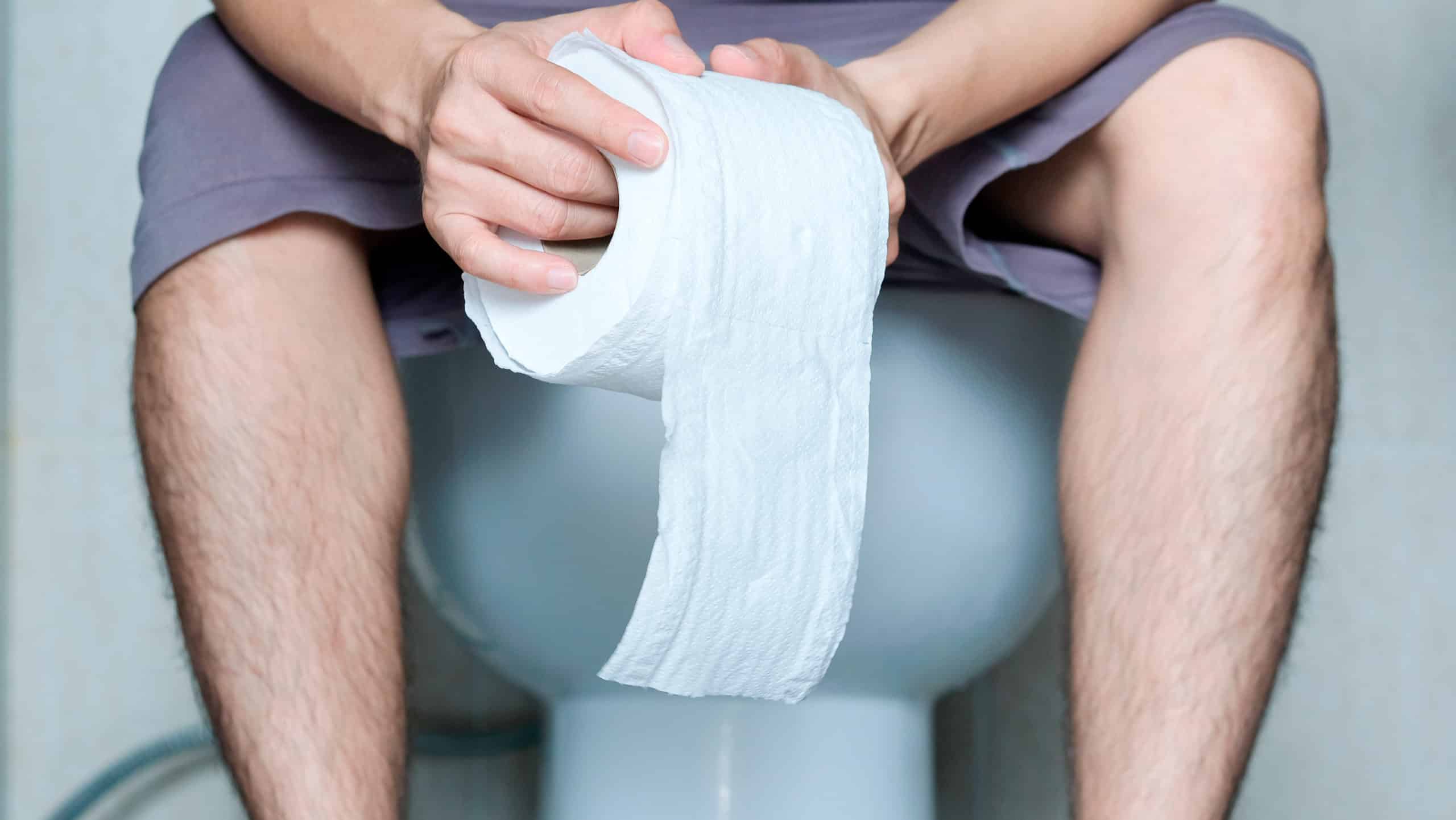Blood in the stool after a car crash is one way to see if a traumatic injury to the abdomen caused damage to the colon or rectum. This is among several car accident injuries that should be taken very seriously. When bleeding occurs, it is necessary to undergo medical evaluation and treatment since this type of injury can be fatal in some cases.
If you need immediate help after an accident with injuries, the car accident lawyers at Wilshire can help. Call us 24/7 at (800) 501-3011 to schedule a free and confidential review of your important case.
Table of Contents:
- Implications of Blood in Stool & Car Accidents
- Overt Blood in Stool
- Other Common Symptoms
- Diagnosis of Colon & Rectum Injuries
- How Are Colon Injuries Grated & Treated
- How Our Car Accident Attorney Can Help
- Frequently Asked Questions
- More Helpful Resources
The Implications of Blood in Stool After a Car Accident
Blood in the stool can appear after a car accident with injuries. There are many different scenarios that lead to this occurrence, and most can cause significant consequences. For the most part, it is usually from blunt trauma to the abdomen.
The blood does not always appear immediately, and associated symptoms may be delayed also. The consequences can be intensified by a delay in recognizing the occurrence of blunt trauma to the abdomen. Aside from minimal markings such as a bruise, its presence can be hidden. However, blood in the stool is a critical symptom, whose recognition can help save a person’s life.
Let the Wilshire Law Firm Help You
If you or a loved one suffered blunt force trauma to the abdomen, you might incur considerable medical and surgical costs as well as long periods of hospitalization. After a car accident, the last thing you need is to deal with insurers and attend to the necessities of filing a claim. If it happened in Southern California, rest assured that the Wilshire Law Firm is available to help. One phone call can initiate our help and allow you to monitor your symptoms and begin the healing journey. We can be reached at (800) 501-3011 or by reaching out to us online.
Overt Blood in the Stool
The color of blood that appears in the stool or on toilet paper can help pinpoint the location of the injury. For instance, if the stomach experienced blunt trauma and bled, the blood in the stool would be black. This is because the injury causes the production of melena, which appears as a black, tarry, sticky substance.
Alternately, if the lower colon or the rectum suffered trauma, the color of the blood would most likely be bright red. This is a crucial consideration for doctors as they initially try to locate your injury/injuries. If the injury is further up in the colon or the small bowel, the blood may appear maroon in color. The blood might be visible on toilet paper, in the water or on the stool. On occasion, the blood may be hidden in the stool, where it is called occult blood. A special test for occult blood is done.

Other Symptoms Go Along With Blood Loss
Depending on the amount of blood that is lost, the symptoms may not appear right away. Instead, symptoms can show up within hours to days from the time of the accident. The intensity of the trauma changes the way the bleeding presents itself. For example, if the bleeding is profuse, it is clearly evident that something is wrong, and calling 911 is mandatory. But what happens when the blood loss is less due to milder trauma? It is incumbent on the doctors and the injured party and their family, if they were released to home, to be alert for symptoms such as:
- Swelling of the abdomen and the liver: Although this can happen when the colon is traumatized, it also is seen when the spleen or liver is damaged.
- Ecchymosis: This is a purplish area of the skin ( commonly called a bruise) over the area of trauma. It can be used as a marker, but it is not always present.
- Blood loss symptoms: These include a drop in blood pressure, a sense of dizziness or faintness and possibly a fast heart rate. The problem here is that enough blood must be lost to elicit such symptoms.
How Is Injury to the Colon or the Rectum Diagnosed?
Aside from blood in the stool, there are several ways to diagnose colon and rectum injury:
- It may be seen when surgery is performed
- A rectal exam may reveal blood in the stool
- Fluid may be present in the abdomen
- A CT scan might reveal a thickening of the colon wall
- The abdomen may contain free gas, visible in radiographic studies
How Are Colon Injuries Graded?
There are two ways to distinguish colon injuries. They are:
- Destructive colon injuries: In this type, some of the intestine is lost due to the traumatic event. One parameter that is used is whether blood flow to the colon is compromised. The other is whether more than 50 percent of the colon wall is damaged. When these parameters are present, a destructive colon injury is diagnosed.
- Non-destructive colon injury: These injuries do not have a compromised blood flow to the colon; less than 50 percent of the colon’s wall is damaged.
How Are the Two Types of Colon Injury Treated?
Typically, a destructive colon injury is treated by removing the damaged colon and bringing the remainder to a hole outside the body and hooked to a bag, which is filled with excretions and emptied. Depending on the case, repair of the colon may be done. Removing a part of the colon followed by repair is often risky.
In a non-destructive colon injury, the damaged intestine may be repaired. A colon resection is used, and the ends are surgically attached. This is less complicated than using a colonoscopy, and the results are generally favorable.
Risks Associated With Colon Surgery
A blood infection is a common risk with colon repair. It is seen more commonly in those who must receive more than six quarts of blood in the first 24 hours. The colon’s contents can leak into the abdominal cavity and cause sepsis. This is why it is necessary to treat the individual as soon as possible after the accident since the longer you wait, the more likely complications will occur. It is essential to be careful when suturing and closing the skin after colon contents are spilled since wound infection is common.
Rectal Injuries
In a car accident, rectal injury often occurs concurrently with a pelvic fracture. It is essential to visualize the injury, and this can be done by using a CT scan. To treat this injury, the rectum needs time to heal. This is done by sealing off the rectum and diverting the elimination of its contents to the outside. Later on, the rectum can once again be opened, and the contents can be eliminated normally. Antibiotic therapy is used to prevent infection.
Small Bowel Injury
This is the most common reason for blood in the stool. As we said earlier, it is usually a darker color. It is crucial to identify the location of the trauma and treat it. Antibiotics should be used prophylactically.
Exploratory surgery is done to locate the precise area that is damaged. Next, it is critical to control bleeding and prevent contamination. The small colon may be resected if necessary and repaired later on. If bleeding is profuse or contamination is evident, it may be necessary to divert the colon until such time as it can be repaired.
Using Bloody Stools to Map Outcome
Finding blood in the stool and other signs of bleeding is an excellent way to determine if abdominal trauma has occurred. It also serves to eliminate the risk of infection if the procedures are done early on. Failure to do this can be seen as malpractice and often leads to wrongful death.
How an Experienced Attorney Can Help with Blood in Stool Injuries
Your personal injury lawyer can help by investigating any signs of malpractice by reviewing medical records. On top of this, he/she can build a strong case against the at-fault driver in a car accident.
The medical costs for this type of injury, surgery and time spent in the hospital are frequently astronomical. There is no reason for an injured party to pay physically and financially for trauma caused by an at-fault driver. Call the Wilshire Law Firm to discuss this with our attorneys in a free, confidential case review. We can be reached at (800) 501-3011 at any time or contact us online. We are here to help you receive the compensation you deserve.
Frequently Asked Questions About Blood In Stool Injuries
Is blood in the stool serious?
Many times it is, especially if you had a car accident. Trauma to the abdomen is common and can have serious consequences.
What happens if you do not see blood in the stool?
This happens, especially if the bleed is slow to appear or hidden. Other symptoms will be apparent however such as low blood pressure and faintness. Call your doctor or ER as soon as possible if these symptoms appear.










